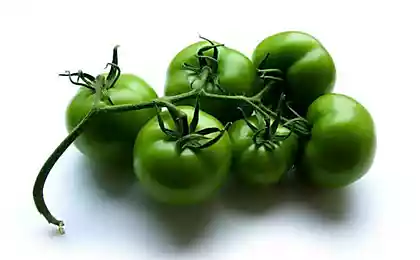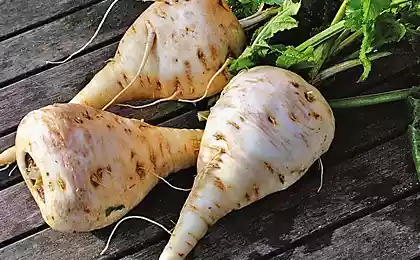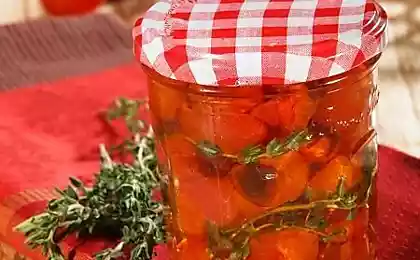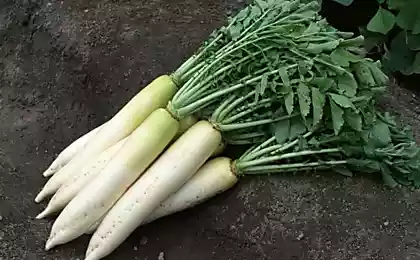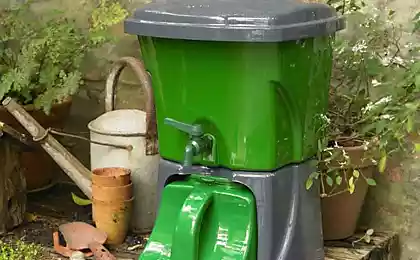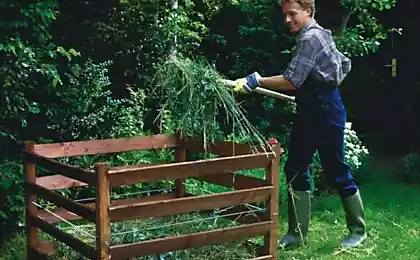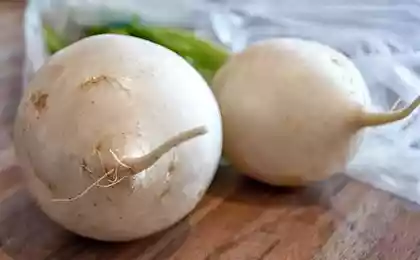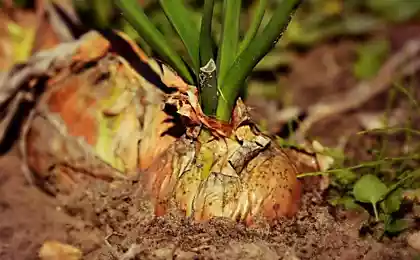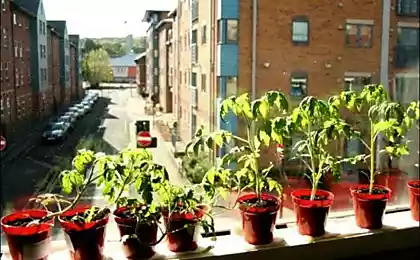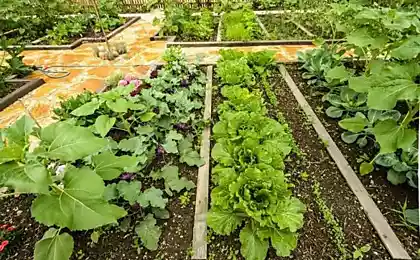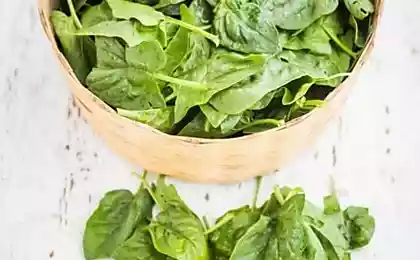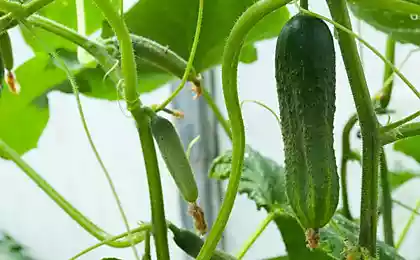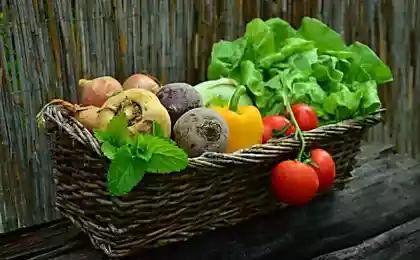480
Garden work in September
Basic gardening work in September is the harvest, podzimnih planting and preparing the garden for winter.
Before the first serious frost it is necessary to collect :
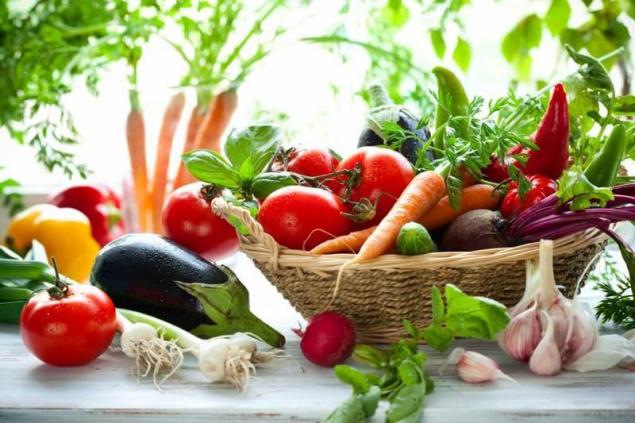
It is advisable not to delay the cleaning of the eggplant: while late harvesting the fruits stiffen and acquire a pronounced bitter taste. Unripe fruit can be carefully removed and placed on the ripening in a dry room.
Tomatoes can also daspet in boxes: it is better to remove the green tomatoes, as even short exposure at temperatures below +10°C really reduces shelf life.
In September the harvesting zucchini, squash and pumpkins. Collected in the technical maturity of the squash can be used for domestic preparations, or store for 2-3 weeks in the refrigerator, wrapped in plastic wrap. Ripe fruit with a hardened crust can be stored at room temperature until the next harvest.
Pumpkins harvested before the cold dry weather (in rainy weather pumpkin dried under a canopy).
Signs of ripeness of a pumpkin:
Ripe fruit is neatly cut from the stalk. The fruits are mechanically damaged or unripe use in the first place.
Continue to harvest mid-season varieties of cabbage cabbage, colour, red, Brussels sprouts, Savoy cabbage. Usually it is removed at the end of September-first half October. The middle part of cabbage is used for pickling, it is cleaning up the white leaves, the rest is consumed in fresh form or it is stored.
The cabbage is intended for storage, leave on the head covering 3-4 leaves and a stalk 2-3 cm to protect the heads from contamination, mechanical damage and decay. The cabbages are placed on racks stalk up to 1-2 layers. The Brussels sprouts cut or break off the heads when they become the size of a walnut and harden.
Aromatic plants in late September, cut at 3-5 cm from the soil, tied into bundles and dried in a well ventilated area.
To extend the consumption of fresh green celery, dug out together with the greens and added dropwise in the ground or on racks in the greenhouse (soil 15-17 cm). The optimum temperature for preserving this green from +2°C to +5°C. the Parsley and celery, grown in protected and open ground can be used for multiple cutting of greens (in season 2-4 times) after each cutting feeding nitrogen and other nutrients.
Harvesting of root crops dependent on weather, the condition of plants, varietal characteristics, purpose of cultivation. Root vegetables, most of which is located above the surface of the soil — beets, turnips, radishes — when autumn frosts can hurt, take them out from mid to end of September. Then remove the parsley and celery. Dug the crop is dried in light shade. The tops are cut on the shoulders, lower the roots of roots not pruned.
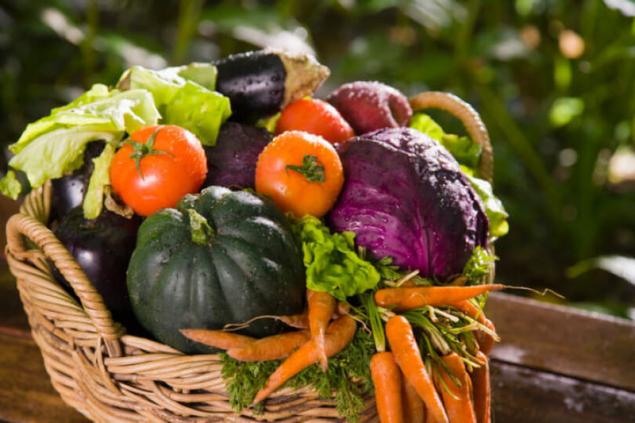
Part of the plants carrots, parsley and parsnip can be left to hibernate in the soil for spring consumption. With the onset of cold weather the leaves are cut, loosen around the plants and covered the soil on top of dry peat, or sawdust to 8-10cm.
If there is dry weather, you can not hurry with the cleaning: during this period, dramatically increased the harvest, and relatively dry weather will provide later a better keeping quality of roots during storage. At sharp fluctuations of soil moisture, the roots start to crack in the ground (especially early maturing varieties of carrots early sowing). In this case, the roots are immediately cleaned, frost damaged, or mechanically damaged roots unfit for storage.
In September remove the potatoes: when laying deposited on top of potatoes put 2-3 rows of table beet, which absorb excess moisture from the potato tubers, and this improves the conditions of storage.
In September, treat the soil, fertilized, watered. In the beds from which harvested cleaning up: remove residues of plants, loosen the soil, sow green manure or prepare beds for podzimny crops.
Also interesting: How to clean and to lay in store beets, carrots and radish
How to uproot stumps on the plot
Garden work in September is not only the harvest, but the sowing of seeds. In mid-September planted bullocki and teeth strelkauskas varieties of winter garlic. Later landing in the middle lane is undesirable, as early frost in autumn can prevent the plants are well rooted.published
Source: venskayadacha.com/ogorodnye-raboty-v-sentyabre/
Before the first serious frost it is necessary to collect :
- late cucumbers,
- eggplant,
- squash,
- cabbage and cauliflower mid-season varieties in the second planting time,
- pepper,
- beets,
- carrots,
- to dig potatoes.

It is advisable not to delay the cleaning of the eggplant: while late harvesting the fruits stiffen and acquire a pronounced bitter taste. Unripe fruit can be carefully removed and placed on the ripening in a dry room.
Tomatoes can also daspet in boxes: it is better to remove the green tomatoes, as even short exposure at temperatures below +10°C really reduces shelf life.
In September the harvesting zucchini, squash and pumpkins. Collected in the technical maturity of the squash can be used for domestic preparations, or store for 2-3 weeks in the refrigerator, wrapped in plastic wrap. Ripe fruit with a hardened crust can be stored at room temperature until the next harvest.
Pumpkins harvested before the cold dry weather (in rainy weather pumpkin dried under a canopy).
Signs of ripeness of a pumpkin:
- the shrinkage of the stalk,
- a clearly defined pattern on the surface of the fruit
- hardening of the bark.
Ripe fruit is neatly cut from the stalk. The fruits are mechanically damaged or unripe use in the first place.
Continue to harvest mid-season varieties of cabbage cabbage, colour, red, Brussels sprouts, Savoy cabbage. Usually it is removed at the end of September-first half October. The middle part of cabbage is used for pickling, it is cleaning up the white leaves, the rest is consumed in fresh form or it is stored.
The cabbage is intended for storage, leave on the head covering 3-4 leaves and a stalk 2-3 cm to protect the heads from contamination, mechanical damage and decay. The cabbages are placed on racks stalk up to 1-2 layers. The Brussels sprouts cut or break off the heads when they become the size of a walnut and harden.
Aromatic plants in late September, cut at 3-5 cm from the soil, tied into bundles and dried in a well ventilated area.
To extend the consumption of fresh green celery, dug out together with the greens and added dropwise in the ground or on racks in the greenhouse (soil 15-17 cm). The optimum temperature for preserving this green from +2°C to +5°C. the Parsley and celery, grown in protected and open ground can be used for multiple cutting of greens (in season 2-4 times) after each cutting feeding nitrogen and other nutrients.
Harvesting of root crops dependent on weather, the condition of plants, varietal characteristics, purpose of cultivation. Root vegetables, most of which is located above the surface of the soil — beets, turnips, radishes — when autumn frosts can hurt, take them out from mid to end of September. Then remove the parsley and celery. Dug the crop is dried in light shade. The tops are cut on the shoulders, lower the roots of roots not pruned.

Part of the plants carrots, parsley and parsnip can be left to hibernate in the soil for spring consumption. With the onset of cold weather the leaves are cut, loosen around the plants and covered the soil on top of dry peat, or sawdust to 8-10cm.
If there is dry weather, you can not hurry with the cleaning: during this period, dramatically increased the harvest, and relatively dry weather will provide later a better keeping quality of roots during storage. At sharp fluctuations of soil moisture, the roots start to crack in the ground (especially early maturing varieties of carrots early sowing). In this case, the roots are immediately cleaned, frost damaged, or mechanically damaged roots unfit for storage.
In September remove the potatoes: when laying deposited on top of potatoes put 2-3 rows of table beet, which absorb excess moisture from the potato tubers, and this improves the conditions of storage.
In September, treat the soil, fertilized, watered. In the beds from which harvested cleaning up: remove residues of plants, loosen the soil, sow green manure or prepare beds for podzimny crops.
Also interesting: How to clean and to lay in store beets, carrots and radish
How to uproot stumps on the plot
Garden work in September is not only the harvest, but the sowing of seeds. In mid-September planted bullocki and teeth strelkauskas varieties of winter garlic. Later landing in the middle lane is undesirable, as early frost in autumn can prevent the plants are well rooted.published
Source: venskayadacha.com/ogorodnye-raboty-v-sentyabre/
